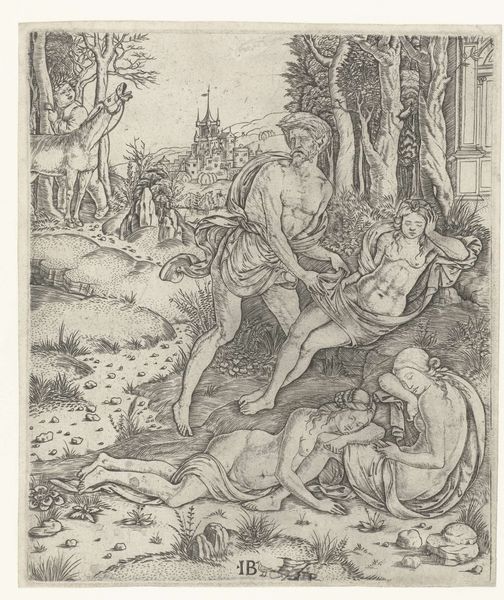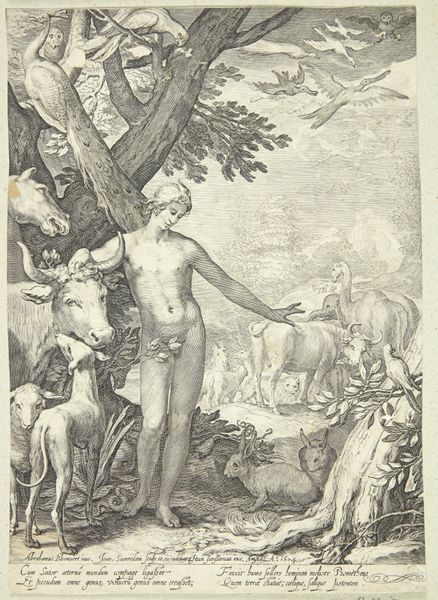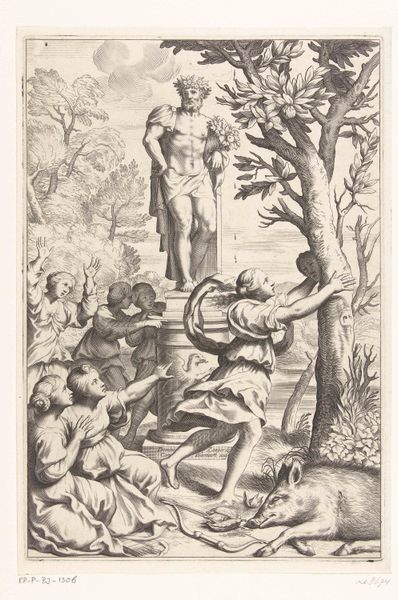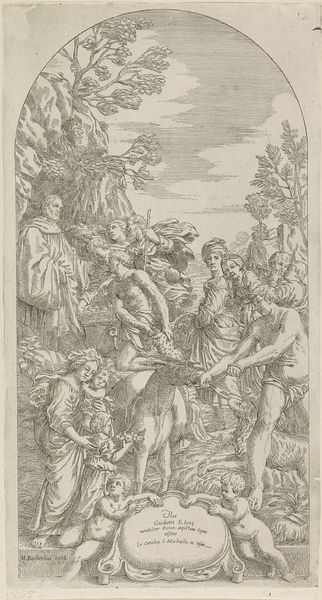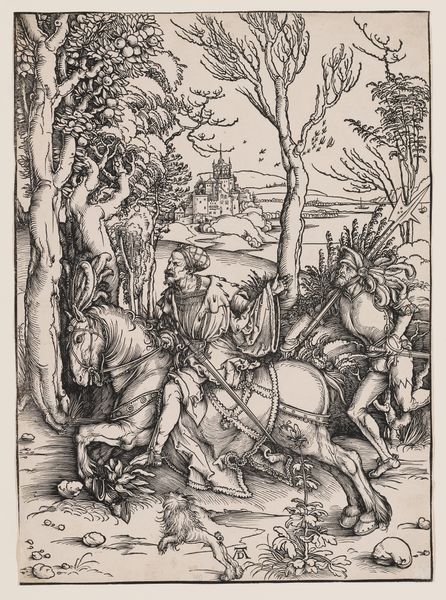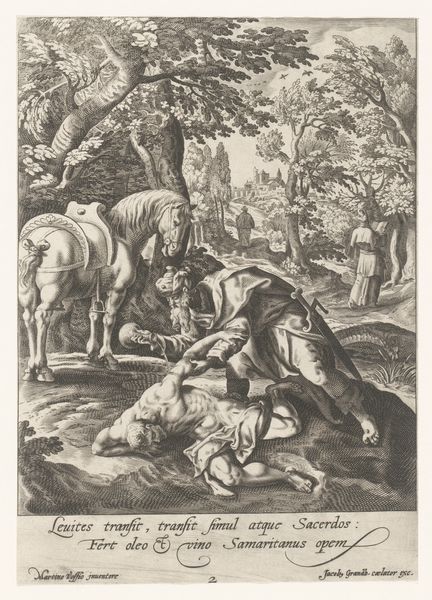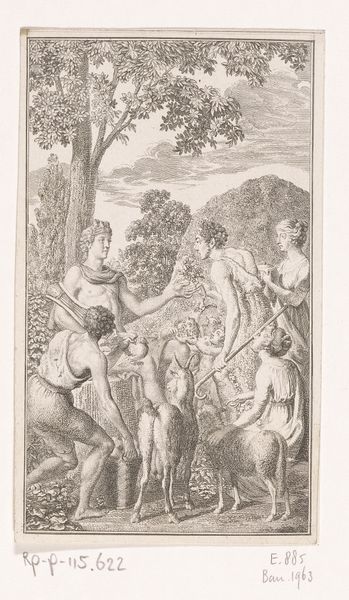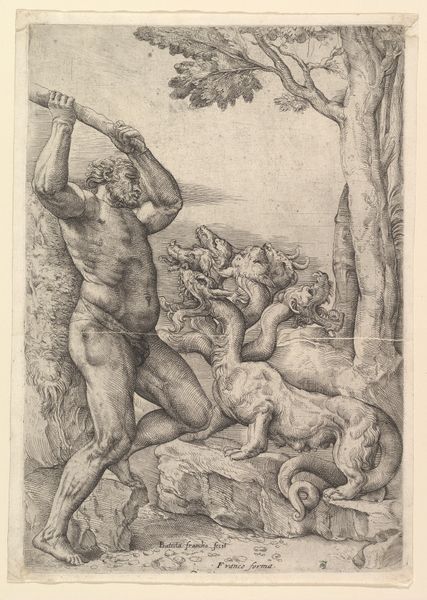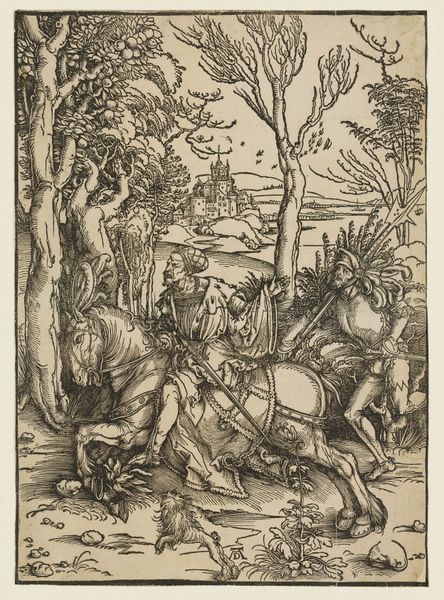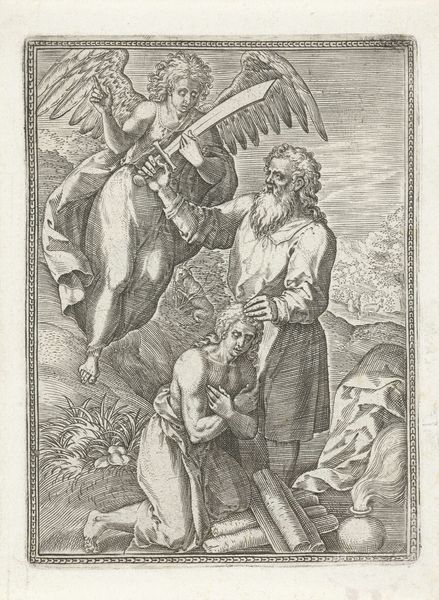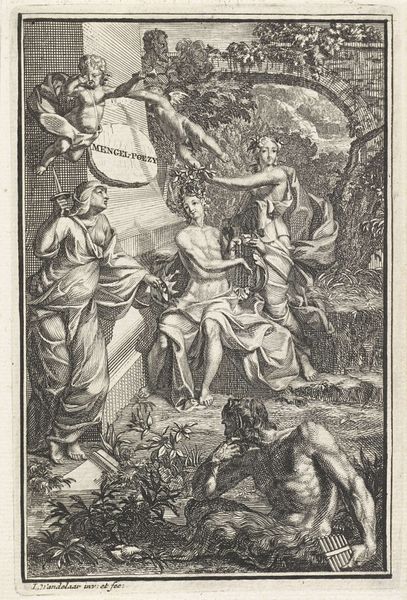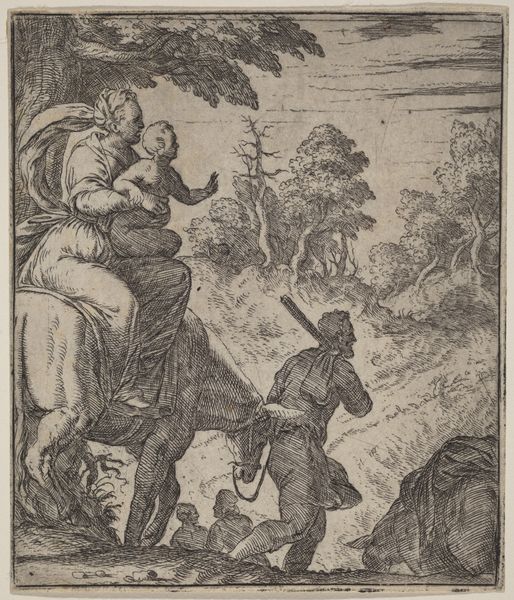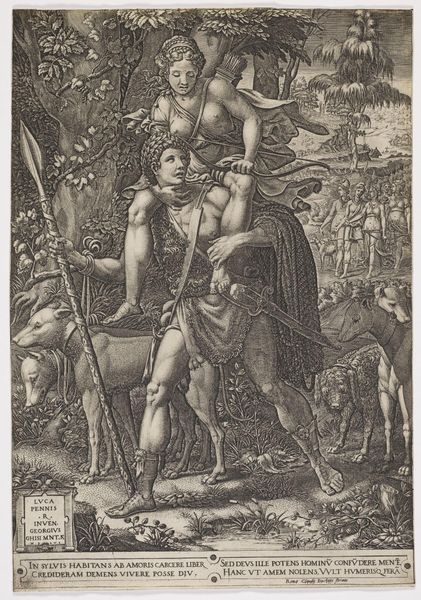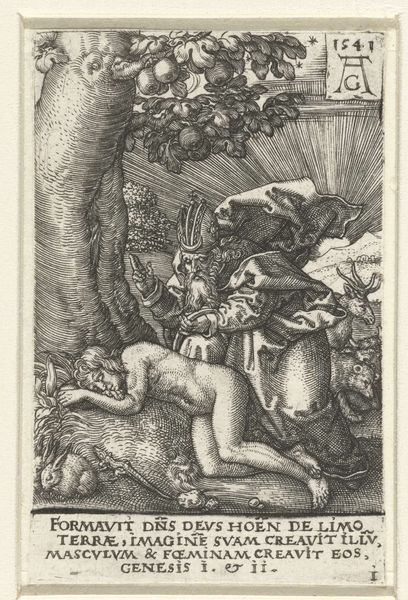
print, etching, engraving
#
baroque
# print
#
pen illustration
#
pen sketch
#
etching
#
old engraving style
#
landscape
#
figuration
#
genre-painting
#
engraving
Dimensions: height 273 mm, width 202 mm
Copyright: Rijks Museum: Open Domain
Nicolaes de Bruyn created this engraving, “The Prodigal Son as Swineherd,” sometime between the late 16th and mid-17th century. De Bruyn was working in a Northern Europe still deeply shaped by religious reformations. The artist uses a biblical parable to explore the depths of human suffering and redemption. The Prodigal Son, once living in luxury, is now brought low, tending to swine in rags. His muscular body is still visible but now serves only to highlight the abjection of his current state. His hands are clasped in prayer. The cultural context here emphasizes moralizing narratives and the consequences of sin. De Bruyn captures a moment of profound humility, inviting viewers to reflect on themes of repentance and forgiveness, and the hope for salvation, even in the most desolate circumstances. While the story maintains a traditional message, the raw emotion conveyed in the son's posture and expression moves this piece beyond mere religious instruction.
Comments
No comments
Be the first to comment and join the conversation on the ultimate creative platform.
